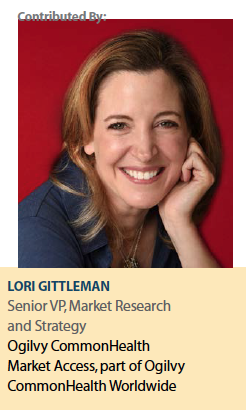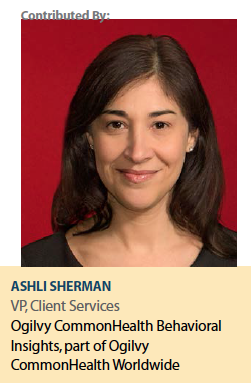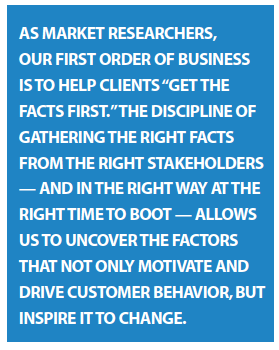Mark Twain is one of our favorite authors — and not just because of classics like The Adventures of Tom Sawyer and its sequel The  Adventures of Huckleberry Finn, but also for an array of funny quotes, such as “Get your facts first, and then you can distort them as much as you please."
Adventures of Huckleberry Finn, but also for an array of funny quotes, such as “Get your facts first, and then you can distort them as much as you please."
That particular quote, however, when placed against the backdrop of primary market research, takes on a whole different — and cautionary — meaning.
As market researchers, our first order of business is to help clients “get the facts first." The discipline of gathering the right facts from the right stakeholders — and in the right way at the right time to boot — allows us to uncover the factors that not only motivate and drive customer behavior, but inspire it to change.
Uncovering the Facts
We conduct market research in the healthcare sector, and, therefore, our clients are typically interested in marketing a specific medication, or learning about a certain therapeutic area or medical specialty. Regardless of whether we are interested in the macro trends related to a particular category or the micro issues specific to a brand, our objective is the same: we need to uncover the right facts in order to understand the levers to pull that will impact behavior.
There are certain activities and processes that are important for us, as an agency, to shepherd our clients through. For instance, we don’t want brand team members driving the creative according to their personal beliefs and perceptions about the product. Rather, we want our clients to clearly hear their customers’ voices, understand their behaviors and what drives their actions, and shape their brand strategy with our guidance.
about the product. Rather, we want our clients to clearly hear their customers’ voices, understand their behaviors and what drives their actions, and shape their brand strategy with our guidance.
We start with a thorough needs assessment to ensure that we know exactly what business questions our clients need to answer, get up to speed on market dynamics, brand performance, and other critical issues, and understand clients’ hypotheses on those topics. Then we help clients "hear" and understand their customers by answering five key questions:
1. What are the right facts (aka, what are the research objectives)?
By targeting specific questions that our clients need to answer, and by understanding how those data points are meant to inform business decisions, we determine the right facts to gather.
The right facts can be as simple as the customer’s geography (physical location) and demography (age, gender, occupation, socioeconomic status), or as complex as their behavior (product consumption level, use patterns, frequency, and loyalty), psychographic profile (interests, attitudes, and opinions), or the dialogue they are having with other stakeholders (understanding what is said — or sometimes not said — when it is being said, and how it is interpreted).
2. Who are the right stakeholders?
Many pharmaceutical clients often believe they have a “physician problem," but chances are they could also have a patient, caregiver, payer, or pharmacist problem (we could go on…). And sometimes it’s more than one problem.
Healthcare is a sector defined by intricate interdependencies among a long list of stakeholders that ultimately impact product usage. Well-designed market research takes into account all relevant stakeholders, including them as the research questions dictate.
We often talk with clients about, at minimum, viewing patients, physicians, and payers as three legs supporting their product’s stool — the "length" (for example, importance) of those legs can vary by therapeutic area, but they all need to be taken into account when planning brand strategy.
3. What is the right research methodology?
One-on-one conversations with customers give us the time and latitude to investigate the “why" behind responses and explore topics that might be challenging to articulate in front of others.
Talking with groups of customers allows us to do a deep dive into products’ features and benefits, and the extent to which they produce functional, emotional, and/or personal benefits.
The size of these groups matters. Larger groups are well suited to brainstorming and ideation, while smaller groups are preferred when we want to have a more in-depth conversation about a particular topic, or are interested in how group members interact with each other.
Projective exercises, in which ambiguous or vaguely defined stimuli grant customers considerable freedom in their responses, can reveal a deeper dimension of thought/decision-making processes and feelings than objective, “correct" responses to explicit research questions.
Quantitative surveys deployed to a large number of customers can obtain results that are statistically significant and can validate hypotheses.
Surveying various types of customers allows us to understand the number and size of market segments, including what those segments "look like."
Ethnographic observation can be done to identify and clarify actual vs. reported behavior.
Research in a physician’s office allows us to evaluate the communication between healthcare professionals and patients, and determine the extent of alignment regarding their takeaways from that conversation. We do this by reviewing the actual dialogue and applying sociolinguistic techniques to analyze both what was said and how it was said.
Video recordings of these interactions allow us to also look at body language.
Does the patient seem open to the conversation?
Are participants using a lot of hand gestures, or referring to tools to help provide education?
Does the healthcare provider have their back to the patient while filling in an electronic medical record?
Shadowing patients diagnosed with a specific condition gives us insight into how patients manage their conditions in real time, how other people in their lives do or do not play a role in that management, and the nuances of how patients interact with our clients’ products.
Social monitoring of publicly available content in blogs, forums, and online news channels enables us to assess the nature, content, and tone of online discourse.
Deploying mobile or app-based methodologies let us track customer thinking and behavior in real time.
4. When is the right time to gather
the facts?
We conduct research either to take the market pulse on the heels of a significant marketplace event, or to get a "snapshot" of the market at a particular moment.
Are we preparing for a product launch or aiming to understand the impact of a recent launch?
Has a competitor just entered the market?
Has there been a legislative, policy, or guideline change that will impact how products are distributed or prescribed?
We create a benchmark by fielding research when the market is "quiet" so we can get a baseline against which to compare the impact of future disruptive events.
Is a new campaign in development?
Do we expect clinical trial data to be released?
Is a branded product about to go generic?
We gain a long-term understanding of customer behavior and product usage by longitudinally gathering the same metrics from the same customers at certain intervals.
How are prescribing patterns changing over time?
How is utilization of the products in a competitive set shifting?
What factors are driving patients to remain compliant with medication?
We test promotional/educational materials or concepts as they are being developed. Depending on customer response, this might warrant multiple rounds of research.
Explore specific content to understand what works best across different media—for example, what works for a print campaign must be tailored to be successful for a social media campaign.
5. How do we "right size" the research so that we get the facts we need, but also take budget and/or time constraints
into account?
Once we understand the business questions we are being asked to answer and the facts we need to gather, we then have to ensure that our research recommendations sync with those goals, while meeting the clients’ budget and timing needs.
It is important to look at all the key elements of a research plan, prioritize them, and assess costs according to what it will really take to get the work done as opposed to thinking about discounts when developing budgets.
 Recruitment costs vary widely by market and methodology: travel may or may not be required, the staffing needs to be appropriate, and deliverables need to be clear (there can be significant differences between how one client defines ‘final report’ and how another client does so!).
Recruitment costs vary widely by market and methodology: travel may or may not be required, the staffing needs to be appropriate, and deliverables need to be clear (there can be significant differences between how one client defines ‘final report’ and how another client does so!).
Remember that research plans also need to be flexible and in some cases iterative, especially in healthcare when, for example, we might need to engage with patients or caregivers to discuss rare diseases, or physicians who are not able to talk with us in the middle of their busy days when they are treating patients.
Interpreting the Facts for Action
But getting back to Mr. Twain…
Contrary to his memorable comment, the second key order of business for market researchers is to make sure that clients do not distort the facts we have gathered to fit their own view — or the marketplace they want instead of the one they have.
It is therefore our job not just to provide the facts, but to interpret them and to make actionable recommendations. We are fortunate to be a part of the larger Ogilvy CommonHealth organization, which gives us a wide and deep network of resources to help us round out that interpretation.
But even for the independent market researcher, or one working at a small company, the extent to which the back-end analysis can be augmented with input from content strategy, data analytics, digital engagement, psychology, linguistic, marketing, and/or consumer behavior experts will help to ensure that recommendations are as complete and integrated as possible.
By answering these five key questions, market research can help your organization’s brand teams get the right facts first (distortion-free), and use that data as a platform on which to build robust strategies that firmly stake your brands’ positioning in the marketplace and ensure success. (PV)
Ogilvy CommonHealth Worldwide — the health behavior specialists of Ogilvy & Mather — is committed to creativity and effectiveness in healthcare communications, everywhere.
For more information, visit ogilvychww.com


















